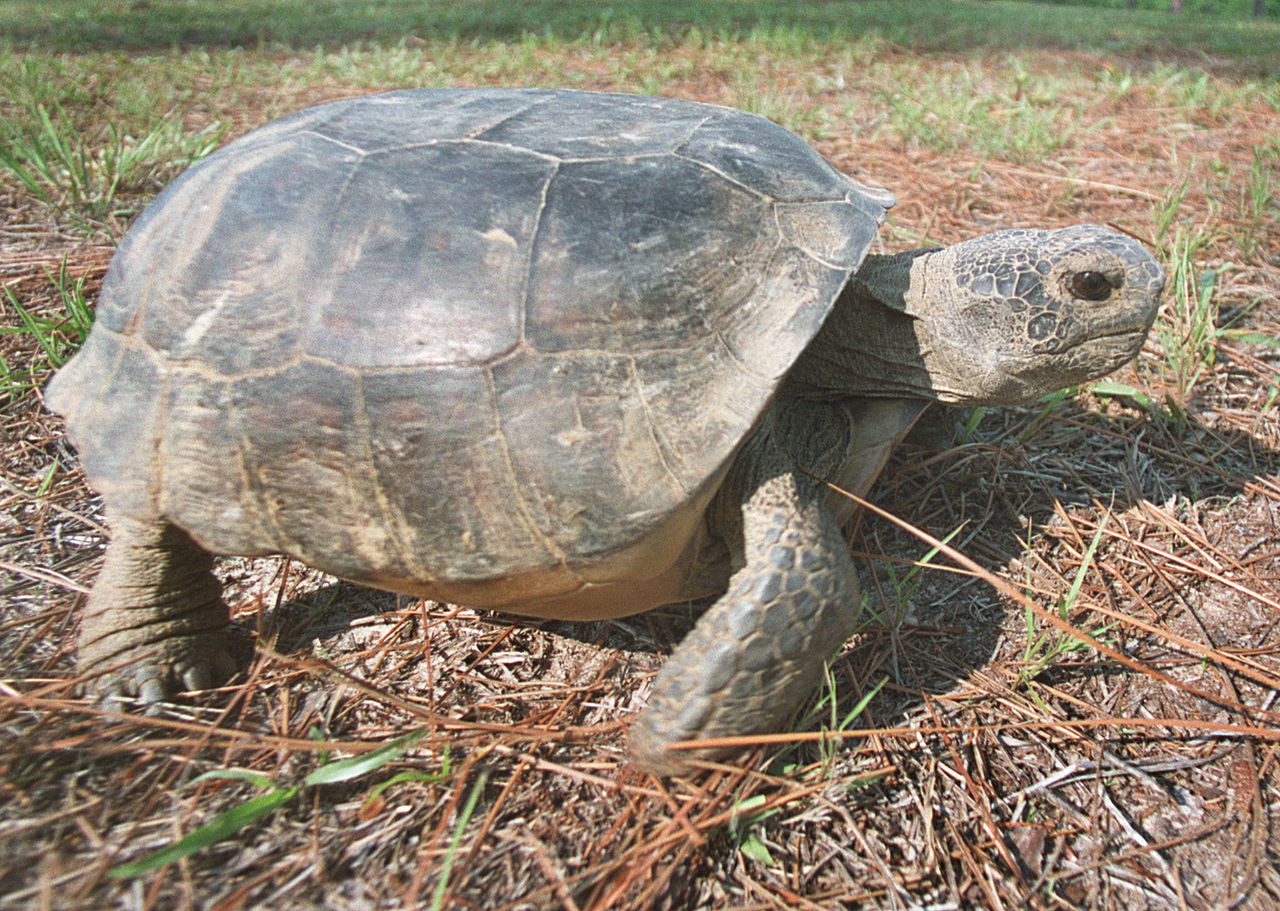Gopher tortoise denied Endangered Species Act protections in most of Alabama
Federal wildlife officials say the threatened gopher tortoise does not need protections under the Endangered Species Act in most parts of Alabama, but wildlife advocates say the decision is short-sighted and ignores significant threats to the tortoise.
The gopher tortoise’s range is split into two distinct segments with the Mobile and Tombigbee Rivers serving as the dividing line. The eastern tortoise population includes most of Alabama, Florida, Georgia and South Carolina, while the western population includes Alabama west of the rivers, along with Mississippi and Louisiana.
The U.S. Fish and Wildlife Service says gopher tortoise populations in the eastern part of its range are doing well enough that federal protections are not needed, while the tortoise in the western range will remain listed as threatened under the Endangered Species Act.
In announcing its decision, the Wildlife Service notes that the tortoise is already protected by state regulations throughout its entire known range and that populations in the eastern range appear to be stable.
“Efforts to improve conditions for the gopher tortoise have been effective, and it is important that scientists, experts and wildlife professionals continue to strategically use our best resources to help recover the gopher tortoise where it’s most vulnerable,” Leopoldo Miranda-Castro, the Fish and Wildlife Service’s Southeastern Regional Director, said in a news release.
“The Service will continue to work with our partners to support head-start programs, resource management plans and other conservation coalitions to help conserve this keystone species.”
But not all agree that the tortoise is on solid enough ground to remove federal protections throughout much of its habitat.
Elise Bennett, an attorney at the Center for Biological Diversity, said the tortoise still faces significant threats from habitat loss and other human activity.
“Denying gopher tortoises the protection they need to survive is indefensible,” Bennett said in a news release.
“It ignores devastating urban sprawl that’s decimated the tortoise’s habitat and will continue to drive the species ever closer to extinction.”
The Center for Biological Diversity notes that Florida law requires gopher tortoises be relocated away from development, but that there are fewer undisturbed places left to relocate the tortoises.
“For years the state has enabled sprawl development by simply moving tortoises out of the way,” Bennett said last year. “Now there’s nowhere left to put them.”
Gopher tortoises are considered a keystone species of longleaf pine forests, though they can be found in other ecosystems as well. The tortoise’s shovel-like front legs are adapted to create underground burrows, which also provide habitat for snakes such as the eastern indigo snake, eastern diamondback rattlesnake and more than 360 species total. But that can also cause problems.
Tortoise burrows were frequent targets of “gassing” during rattlesnake roundups, in which gasoline or other harmful substances were poured down burrows to get snakes out.
The Wildlife Service says that approximately 80 percent of the tortoise’s current habitat is on private lands that are managed for forest production, providing “opportunities for forestry-related conservation actions.”
